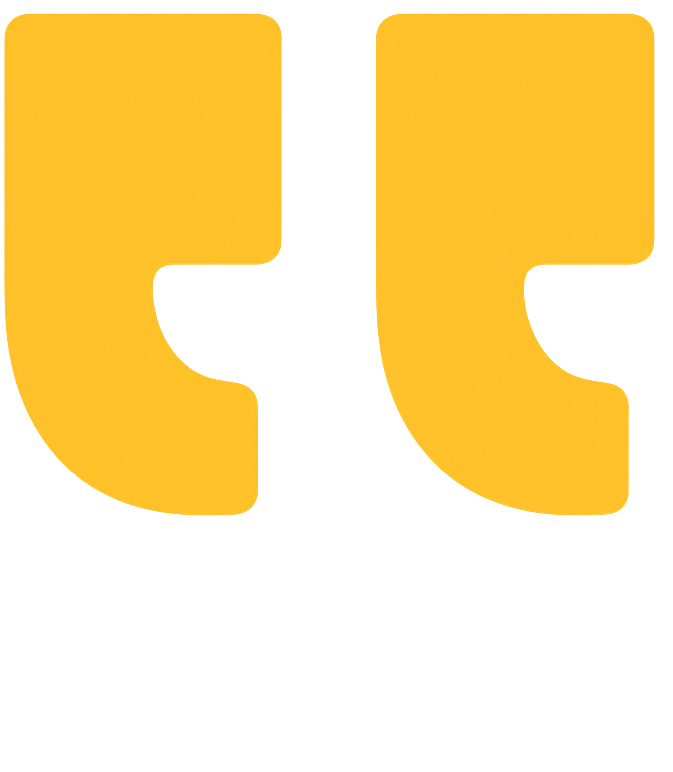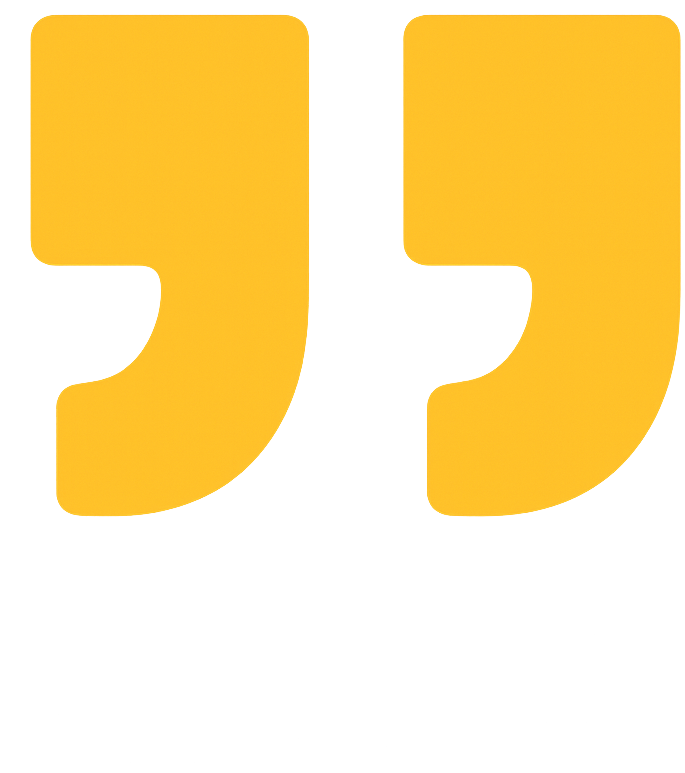Prefer reading in Chinese? Click here for the Chinese version.
Every great business is built on more than just products. It’s built on ideas. From your brand name and logo to your unique creations and innovations, these are valuable assets that set you apart from competitors.
That’s where Intellectual Property (IP) comes in. IP gives legal protection to your ideas and creations, ensuring they remain yours to grow, license and profit from. Among the different types of IP, the three most relevant for businesses are trademarks, copyrights and patents, each protecting a different piece of your business identity and innovation.
Trademark
A trademark safeguards the elements that make your brand recognizable such as your logo, business name, slogan or even specific design features. By registering a trademark, you prevent others from copying or misusing your brand identity, ensuring your business stands out in the marketplace. Strong trademarks build customer trust and long-term brand loyalty.
Below are the official Trademark Classes (Goods & Services) you need to know when registering:
Trademark Classes (Goods and Services)
Click the 🔽 to expand
🔽 Goods
Class 1 – Chemicals, resins, plastics, adhesives.
Class 2 – Paints, varnishes, lacquers, dyes.
Class 3 – Cleaning products, soaps, perfumes, cosmetics, toothpaste.
Class 4 – Oils, lubricants, fuels, candles.
Class 5 – Pharmaceuticals, medical/vet products, supplements, disinfectants.
Class 6 – Common metals, metal goods, hardware, ores.
Class 7 – Machines, engines (not for land vehicles), vending machines.
Class 8 – Hand tools, cutlery, razors.
Class 9 – Electronics, computers, software, scientific instruments.
Class 10 – Medical, surgical, dental, veterinary instruments.
Class 11 – Lighting, heating, cooking, refrigeration, sanitation.
Class 12 – Vehicles and transport equipment.
Class 13 – Firearms, ammunition, fireworks.
Class 14 – Jewelry, watches, precious metals.
Class 15 – Musical instruments.
Class 16 – Paper, books, stationery, printing, teaching materials.
Class 17 – Rubber, plastics, insulating materials, pipes (non-metal).
Class 18 – Leather goods, bags, trunks, umbrellas, saddlery.
Class 19 – Building materials (non-metal), pipes, monuments.
Class 20 – Furniture, mirrors, picture frames, plastics.
Class 21 – Household/kitchen items, glassware, ceramics.
Class 22 – Ropes, nets, tents, tarpaulins, sacks, raw textiles.
Class 23 – Yarns and threads.
Class 24 – Textiles, fabrics, bed/table covers.
Class 25 – Clothing, footwear, headgear.
Class 26 – Lace, embroidery, ribbons, buttons, needles, artificial flowers.
Class 27 – Carpets, rugs, mats, floor coverings, wall hangings.
Class 28 – Games, toys, sporting goods, Christmas decorations.
Class 29 – Meat, fish, poultry, dairy, oils, preserved foods.
Class 30 – Coffee, tea, sugar, rice, bread, confectionery, spices.
Class 31 – Fresh produce, grains, seeds, live animals, plants, flowers.
Class 32 – Beers, mineral waters, non-alcoholic drinks, juices.
Class 33 – Alcoholic beverages (excluding beer).
Class 34 – Tobacco, smokers’ articles, matches.
🔽 Services
Class 35 – Advertising, business management, administration, office work.
Class 36 – Insurance, financial, real estate services.
Class 37 – Construction, repair, installation.
Class 38 – Telecommunications.
Class 39 – Transport, packaging, storage, travel.
Class 40 – Treatment of materials.
Class 41 – Education, training, entertainment, sports, culture.
Class 42 – Science, technology, research, IT, software development.
Class 43 – Food & drink services, temporary accommodation.
Class 44 – Medical, veterinary, beauty, agriculture services.
Class 45 – Legal, security, personal/social services.
Copyright
Copyright covers original creative works such as books, music, software, designs and even marketing content. It ensures that the creator maintains control over how their work is used and distributed. For businesses, this means your marketing materials, website content or proprietary software are legally protected from unauthorized use.
Patent
A patent protects inventions and technical solutions, giving you exclusive rights to make, use or sell your innovation for a set period. This is especially important for businesses developing unique products, processes or technologies. With a patent, you can stop competitors from imitating your innovation and you may also create new revenue streams by licensing or selling your patented rights.
Why It Matters for Your Business?
Protecting your intellectual property is more than a legal requirement. It’s a strategic business move. Trademarks, copyrights, and patents strengthen your market position, attract investors and open opportunities for growth through licensing or partnerships.
By understanding these forms of IP and securing the right protection, you not only safeguard your business from competitors but also maximize the value of your ideas and innovations. For SMEs, registering IP early helps avoid costly disputes and builds brand credibility with investors, customers and partners.

➊ Trademark
🔽 — click it to open the answer
🔽 What is a Trademark (TM/™️)?
A Trademark normally refers to a company name, individual name, signature, label, sound, smell, colour, logo, slogan or shape of product of a business.
A Trademark is your business/corporate identity that will help you distinguish yourself from your competitors.
🔽 How many types of Trademarks are there?
➊ Composite Mark: A combination of both words and a logo (word + device). Protection is limited to the specific design registered.
➋ Word Mark: Protects the wording, letters or numbers of your brand. This provides the broadest protection regardless of font, style, or color.
➌ Device Mark: Covers logos, symbols or images that visually represent your brand.
🔽 What are the main characteristics of a Trademark?
➊ Territorial protection: Trademarks are protected on a country-by-country basis. A registration in Malaysia does not give automatic protection overseas.
➋ Per mark, per class: Registration applies to each individual trademark in the specific class of goods or services selected.
➌ First-to-file system: Malaysia follows the first-come, first-served principle, meaning whoever files the application first generally has the rights.
➍ Based on 45 international classes: Trademark protection is categorized under the Nice Classification system, which consists of 45 classes (34 for goods and 11 for services).
🔽 What are the pre-requisites to be fulfilled before a Trademark can be registered?
Before registering a trademark, it is important to conduct a search to check if anyone else has already registered the same or a similar trademark.
To be registrable, a trademark must meet one or more of the following requirements:
➊ Company or individual name: Represented in a distinctive manner.
➋ Signature: Provided it is legible and can be recognized by the public.
➌ Invented words: Unique words not found in the dictionary.
➍ Words with direct reference to:
‣ Quality
‣ Character
‣ Geographical name
‣ ⚠️ Note: Surnames are not registrable
Importantly, actual business use of the mark is not required at the time of filing. Meeting just one of the above requirements is sufficient for trademark registration.
🔽 What is the importance/benefit of a Trademark?
Registering a trademark provides multiple advantages for businesses, from legal protection to commercial value. Some key benefits include:
➊ Government Support: Proof of trademark ownership may be required when applying for grants, franchises, or loans from government agencies.
➋ Business Asset: A trademark is an intangible asset that can be sold, licensed, or franchised.
➌ Insurance & Protection: Shields your brand from infringement and unauthorized use.
➍ Legal Weapon: Gives you the right to take legal action against others using the same or a confusingly similar brand.
➎ Marketing Advantage: Enhances credibility, quality, and prestige. Many e-commerce platforms also require proof of trademark registration to confirm ownership before allowing product listings.
➏ Reduced Legal Risk: Protects your business by lowering the risk of disputes.
➐ Investor Confidence: Strengthens business valuation and attracts investors by showing that your brand and intangible assets are well-protected.
🔽 How long does it take for a Trademark to be successfully registered?
In Malaysia, typically 12–18 months if there are no objections/opposition.
The duration depends on several factors, including:
➊ Whether there are any objections or oppositions raised during examination or publication;
➋ The completeness and accuracy of the application; and
➌ How quickly the applicant responds to queries or requests from MyIPO.
If the application is straightforward with no objections, it can be completed closer to the 9-month mark. However, if issues arise, the process may extend beyond 18 months.
🔽 How much does it cost for a Trademark registration?
According to the Intellectual Property Corporation of Malaysia (MyIPO), the official filing fee for a trademark starts at RM370 per class for online applications (RM400 for manual filings). Renewal after 10 years costs RM1,000 per class.
🔽 What practical steps do I have to take to obtain protection for my trademark?
The approximate fee of IP valuation is in the range of RM25,000 – RM30,000. The benefit of IP valuation is certain as it accurately measures the worth of your intangible assets and provides a clearer, more solid view of your company’s overall value to both you and potential shareholders.
➋ Copyright
🔽 — click it to open the answer
🔽 What is Copyright?
Copyright (or author’s right) is a legal term used to describe the rights that creators have over their literary and artistic works. Works covered by copyright range from books, music, paintings, sculpture, and films to computer programs, databases, advertisements, maps, and technical drawings.
🔽 What can be protected using Copyright?
Copyright protects original works of authorship, covering a wide range of creative and intellectual outputs. Common examples include:
➊ Literary works: Novels, poems, plays, reference works, newspaper and magazine articles.
➋ Computer programs and databases
➌ Films, music and choreography
➍ Artistic works: Paintings, drawings, photographs and sculptures.
➎ Architectural designs
➏ Other creative works: Advertisements, maps and technical drawings.
Important to note:
Some works, such as titles, short slogans or simple logos may not qualify for copyright protection unless they demonstrate sufficient creativity and authorship.
Copyright protects only the expression of ideas, not the ideas themselves, methods, or mathematical concepts.
🔽 What rights does Copyright give me? What are my rights as an author of a work?
Copyright grants two main categories of rights to authors and creators:
➊ Economic Rights
These allow the rights owner to derive financial reward from the use of their works. The owner has the authority to permit or prevent others from:
‣ Reproducing the work (e.g., printing, photocopying, sound recording).
‣ Performing it publicly (e.g., plays, music, drama).
‣ Recording it (e.g., CDs, DVDs, digital formats).
‣ Broadcasting it via radio, television, cable, or satellite.
‣ Translating it into other languages.
‣ Adapting it into another form (e.g., turning a novel into a film).
➋ Moral Rights
These protect the personal and reputational interests of the author. Widely recognized moral rights include:
‣ The right to claim authorship of a work.
‣ The right to object to modifications or uses that could harm the creator’s reputation.
In many countries, authors may also receive remuneration for the use of their works, sometimes through collective management organizations.
🔽 What is the © symbol? Do I need to include it on my work?
In the past, some countries required copyright holders to use the © symbol in order to secure copyright protection. This served as formal notice that the work was protected.
Today, copyright protection is automatic in most countries under international agreements and the use of the © symbol is no longer a legal requirement.
However, many creators and rights holders still use the © symbol because it:
• Clearly notifies the public that the work is protected by copyright.
• Reinforces that all rights are reserved unless permission is granted.
• Helps prevent misuse by making the protection more visible.
While optional, including the © symbol is a simple and effective way to assert your rights.
🔽 Can I protect my works internationally using Copyright?
Yes, but it depends on the country.
Copyright protection is automatic in all countries that are party to the Berne Convention. This treaty harmonizes copyright protection across more than 180 member countries, meaning your work is generally protected internationally without the need for separate registration.
However, copyright laws are territorial. They only apply within the country where they were enacted. For countries not part of the Berne Convention, you will need to comply with that country’s specific legal requirements in order to secure protection.
If you want your work protected worldwide, always check the copyright laws of each country where you plan to distribute, publish, or use your work.
🔽 Is there a Copyright registry / depositary
There is no single international registry for copyright-protected works because as a rule copyright protection is automatic and does not depend on registration.
However, in some countries, voluntary copyright registries or deposit systems are available. Registering your work in such a system can be helpful, especially in the event of a dispute over ownership as it provides strong evidence of authorship and the date of creation.
In certain jurisdictions, depositing copies of published works (such as books, newspapers, or magazines) with a national library or authority may even be a legal requirement, though this does not affect the validity of copyright itself.
While not mandatory, voluntary registration or deposit can provide an extra layer of protection and peace of mind for creators.
➌ Patent
🔽 — click it to open the answer
🔽 What is a Patent?
A patent is an exclusive right granted for an invention. A new product or process that provides a technical solution to a problem. In Malaysia, a patent lasts up to 20 years (with renewal) and gives the owner the right to make, use, sell, or license the invention while preventing others from doing so without permission.
🔽 What rights does a Patent provide?
A patent gives the owner the exclusive right to control the use of the invention. This means others cannot make, use, sell, distribute, or import the invention for commercial purposes without the owner’s consent during the protection period.
🔽 What kinds of inventions can be protected?
Patents can be granted for inventions in any field of technology from simple household tools to advanced nanotechnology. An invention may be:
➊ A product (e.g., a chemical compound, machine or device) or
➋ A process (e.g., a method of manufacturing or producing a compound).
Many modern products combine multiple patented inventions. For example, a laptop may include hundreds of patented components working together.
🔽 How long does Patent protection last?
In Malaysia, 20 years from filing date, subject to annual renewal fees.
🔽 Is a Patent valid in every country?
No. Patents are territorial rights, which means they are only valid in the country or region where they are filed and granted, according to local laws. To protect an invention internationally, you must file separate applications in each country, or use international systems such as the Patent Cooperation Treaty (PCT).
Malaysia is a member of the PCT, which allows applicants to seek patent protection in multiple countries through a single filing.
🔽 How are Patent rights enforced?
Patent rights are enforced through the courts, usually on the initiative of the patent owner. Courts can order infringers to stop using the invention and may award damages. However, the responsibility to monitor, identify and take action against infringement lies with the patent owner.
🔽 Why are Patent useful (to society, businesses, individual etc.)?
Patents encourage innovation by rewarding inventors with recognition and exclusive rights to their inventions. This motivates individuals and businesses to invest in new ideas.
They also benefit society because published patents share knowledge publicly, helping others improve on existing ideas instead of “reinventing the wheel.” This continuous cycle of innovation improves technology, products, and overall quality of life.
🔽 What practical steps do I have to take to obtain protection for my Patent?
To protect your invention, you need to file a patent application with the Intellectual Property Corporation of Malaysia (MyIPO) or the IP office in the country where protection is sought. For guidance through the process, it’s best to consult an IP specialist.
➍ Industrial Design
🔽 — click it to open the answer
🔽 What is an Industrial Design?
Under Malaysian law, an industrial design refers to the features of shape, configuration, pattern, or ornament applied to an article by any industrial process, which gives the article a unique appearance.
An industrial design protects the ornamental or aesthetic aspects of an article not its technical or functional features.
In Malaysia, an industrial design may consist of:
➊ Three-dimensional features: Such as the shape or configuration of a product (e.g., the contour of a bottle).
➋ Two-dimensional features: Such as patterns, lines or colors applied to a surface (e.g., fabric designs, decorative motifs).
To be registrable, the design must be new and not previously disclosed to the public in Malaysia or elsewhere.
🔽 What kind of protection does an Industrial Design has offer?
The owner of a registered industrial design in Malaysia has the exclusive right to prevent others from:
➊ Making
➋ Selling, or
➌ Importing
any product that bears or embodies a design which is a copy or substantially a copy of the protected design, when such acts are carried out for commercial purposes.
This protection ensures that competitors cannot exploit the visual appearance of your product without permission, giving you stronger control over your brand’s identity and market advantage.
🔽 What kind of products can benefit from Industrial Design protection?
In Malaysia, industrial design protection applies to a wide range of industrial and handcrafted products. These include:
➊ Consumer goods: Packaging, containers, furniture, household items.
➋ Fashion and accessories: Textiles, clothing patterns, jewelry, watches.
➌ Technology products: Electronic devices, appliances anad lighting equipment.
➍ Artistic and decorative items: Ornaments , handicrafts and decorative finishes.
➎ Digital elements: Graphic symbols, graphical user interfaces (GUI) and icons.
Essentially, any product where the aesthetic or ornamental features (shape, pattern, lines or colors) give it a unique appearance can be protected under industrial design law in Malaysia.
🔽 How are Industrial Designs protected?
In Malaysia, an industrial design must be registered with the Intellectual Property Corporation of Malaysia (MyIPO) in order to receive legal protection. Once registered, the design owner has the exclusive right to control and prevent others from making, importing, or selling products that embody the same or a substantially similar design.
➊ Protection period: An initial 5 years from the filing date.
➋ Renewals: Renewable every 5 years, up to a maximum of 25 years in total.
➌ Scope: Protection applies only to the appearance (aesthetic features) of the product, not its technical or functional aspects.
Unlike some countries, Malaysia does not recognize unregistered industrial designs. Registration is necessary to enforce your rights.
🔽 How long does Industrial Design protection last?
In Malaysia, industrial design protection lasts for an initial 5 years from the filing date and can be renewed every 5 years, up to a maximum of 25 years in total.
🔽 How are Industrial Design rights enforced?
In Malaysia, industrial design rights are enforced through the courts, usually by the design owner. Remedies may include injunctions (to stop infringement), damages or compensation, and in some cases, seizure of infringing goods.
🔽 What practical steps do I have to take to obtain protection for my Industrial Design?
In Malaysia, you need to file an application with MyIPO (Intellectual Property Corporation of Malaysia). The process involves submitting representations of the design, paying the filing fee and going through examination before registration is granted. For smoother filing, it’s best to consult an IP specialist.
Source: https://www.myipo.gov.my/
You’re welcome to join our community group to get exclusive
and latest trend of business insight👇
① Join EN group
② Join CN group
Want to know more about starting a Sdn Bhd? What’s the best way to start one, and what should you be mindful of? Register and find out in our upcoming webinar!


For more information, get in touch with us on WhatsApp @018-767 8055 today!

 1,000+ reviews with a 4.9-star rating on
1,000+ reviews with a 4.9-star rating on



